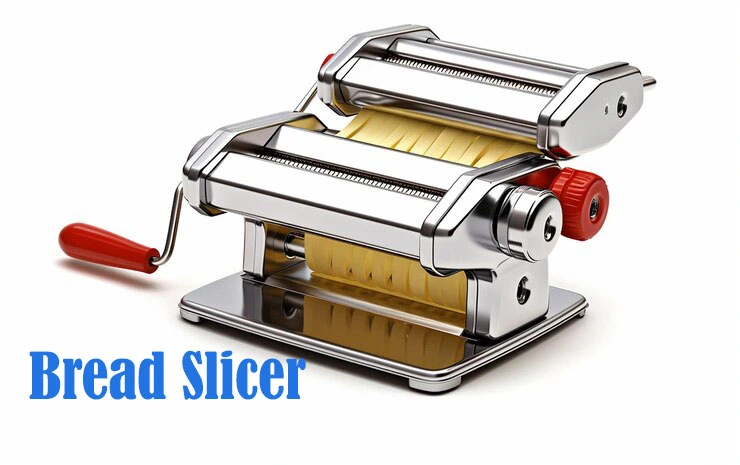Bread, one of the most ubiquitous and essential food items across cultures, has a long and storied history. Despite its simplicity, bread’s preparation, presentation, and consumption have seen significant innovations. One such innovation that has revolutionized how we enjoy bread is the bread slicer. This seemingly simple device has had a profound impact on the way we consume bread, influencing convenience, uniformity, and even safety.
A Brief History of Bread Slicing
Before the invention of the bread slicer, bread was typically sold in whole loaves, and slicing was done at home with a knife. This method was not only time-consuming but also resulted in uneven slices that varied in thickness, making it difficult to achieve consistent results for sandwiches, toast, and other culinary uses. The quest for a more efficient method of slicing bread culminated in the early 20th century.
In 1928, Otto Frederick Rohwedder, an American inventor, introduced the first bread slicing machine. Rohwedder’s invention was initially met with skepticism; many bakers believed that pre-sliced bread would quickly go stale. However, the device proved its worth when it was installed in a bakery owned by Frank Bench in Chillicothe, Missouri. The first loaf of commercially sliced bread was sold on July 7, 1928, and it didn’t take long for the innovation to gain widespread acceptance. By 1930, sliced bread had become a national sensation in the United States, prompting the expression “the best thing since sliced bread” to describe groundbreaking innovations.
How Bread Slicers Work
Bread slicers can be manual or electric, with commercial versions designed for high-volume use and smaller, more compact versions available for home kitchens. The basic principle behind a bread slicer is the use of a series of parallel blades that cut through the loaf in one swift motion, producing uniform slices.
Manual Bread Slicers: These typically feature a series of guides or slots into which a knife is inserted to slice the bread. Manual slicers are often adjustable, allowing users to choose their desired slice thickness. They are generally compact, affordable, and suitable for occasional use at home.
Electric Bread Slicers: These are more advanced and are often used in commercial settings such as bakeries and grocery stores. They use a motor to drive the slicing mechanism, allowing for quick and efficient slicing of multiple loaves. Electric slicers can handle a higher volume of bread and provide consistent slices with minimal effort from the operator.
Benefits of Using a Bread Slicer
- Uniformity: One of the most significant advantages of using a bread slicer is the ability to produce uniform slices. Consistency in slice thickness is crucial for both aesthetic and practical reasons, especially in commercial settings where presentation and portion control matter.
- Convenience: Slicing bread by hand can be time-consuming and requires a steady hand to achieve even slices. Bread slicers simplify this task, saving time and effort, especially when dealing with large quantities.
- Safety: Using a bread slicer reduces the risk of accidental cuts that can occur when slicing bread with a knife. This is particularly beneficial in environments where quick and repetitive slicing is necessary.
- Preservation: Pre-sliced bread can be packaged in a way that extends its shelf life. By sealing the bread immediately after slicing, bakeries can reduce the exposure to air, which helps maintain freshness.
Modern Innovations
Today’s bread slicers have evolved to include advanced features such as adjustable slicing thickness, automatic feeders, and built-in safety mechanisms. Additionally, compact and aesthetically pleasing designs have made bread slicers a viable option for home kitchens, catering to the growing trend of home baking.
Conclusion
The bread slicer, a simple yet transformative invention, has made a lasting impact on both the commercial and domestic consumption of bread. By providing uniform slices quickly and safely, it has enhanced the way we enjoy one of the oldest and most cherished staples of our diet. As technology continues to advance, we can expect further innovations in bread slicing, making this indispensable tool even more efficient and accessible.
FAQs
1. What is a bread slicer?
A bread slicer is a device designed to cut a loaf of bread into uniform slices quickly and efficiently. They can be manual or electric, with various models suited for home or commercial use.
2. How does a bread slicer work?
Bread slicers typically use parallel blades or a series of slots to guide a knife, ensuring each slice is the same thickness. Electric models automate this process using a motor to drive the blades through the loaf.
3. What are the benefits of using a bread slicer?
- Uniformity: Ensures even slice thickness.
- Convenience: Saves time and effort compared to manual slicing.
- Safety: Reduces the risk of cutting injuries.
- Preservation: Helps maintain the freshness of the bread by enabling better packaging.
4. Are bread slicers safe to use?
Yes, bread slicers are generally safe to use. Many models come with safety features such as blade guards and non-slip bases to prevent accidents. However, it’s important to follow the manufacturer’s instructions and handle with care.
5. Can I adjust the thickness of the slices?
Many bread slicers, especially manual ones, allow you to adjust the thickness of the slices. Some electric models also offer adjustable settings to customize the slice thickness according to your preference.
6. What types of bread can I slice with a bread slicer?
Most bread slicers can handle a variety of bread types, including soft loaves, crusty artisanal bread, and even some pastries. However, very hard or dense breads might require a more robust slicer.
7. How do I clean a bread slicer?
For manual slicers, remove any detachable parts and wash them with warm soapy water. For electric models, follow the manufacturer’s cleaning instructions, which often involve wiping down the blades and the machine with a damp cloth.
8. Is it worth buying a bread slicer for home use?
If you frequently bake or buy whole loaves of bread, a bread slicer can be a valuable addition to your kitchen. It saves time and ensures consistent slices, which is especially useful for making sandwiches and toast.
9. How much does a bread slicer cost?
The cost of a bread slicer can vary widely. Manual slicers are generally more affordable, ranging from $20 to $50. Electric models can range from $100 to several hundred dollars, depending on the features and brand.
10. Where can I buy a bread slicer?
Bread slicers are available at kitchenware stores, major retailers like Walmart and Target, and online marketplaces such as Amazon. Specialty baking stores also carry high-quality bread slicers.
11. What should I consider when choosing a bread slicer?
- Type (manual vs. electric): Choose based on your slicing needs and frequency of use.
- Adjustability: Look for models with adjustable slice thickness.
- Safety Features: Ensure the slicer has adequate safety mechanisms.
- Ease of Cleaning: Consider how easy it is to clean the slicer.
- Size: Ensure it fits your kitchen space and storage capabilities.











